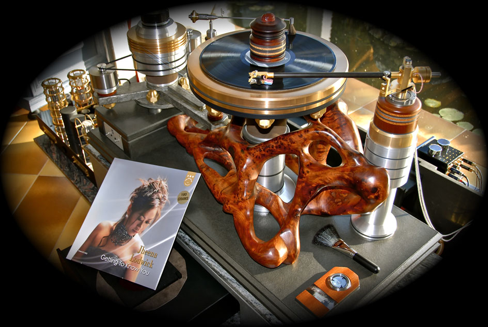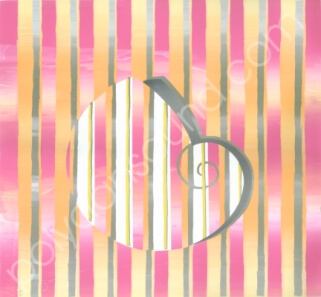Rollicking Tracks
 Indeed, the modulated groove record at high amplification even doesn’t look like a country road!
Indeed, the modulated groove record at high amplification even doesn’t look like a country road!
Some standard limitations and comparisons lead to the same extreme conclusions. For example, let’s consider a situation when you received a record value of $500 and with the year of manufacture, for example, of 1953. The unit is one from limited production. Excellent condition. And no sound! At your other records there is, and at this is not! And the answer is the absence of uniform standards of recording in the past and ignoring this specification in the present. Each studio was recording only under ITS patents on recording formats. Let’s try to bring them back to mind. Deep (vertical) record is performed when the cutter (needle) moves vertically. Transverse (horizontal) record is performed when the cutter (needle) moves horizontally. 45 degree (stereo), record is performed when each channel is written on one side of the groove, between the walls having an angle of 90 degrees. Next by importance is notorious curve RIAA.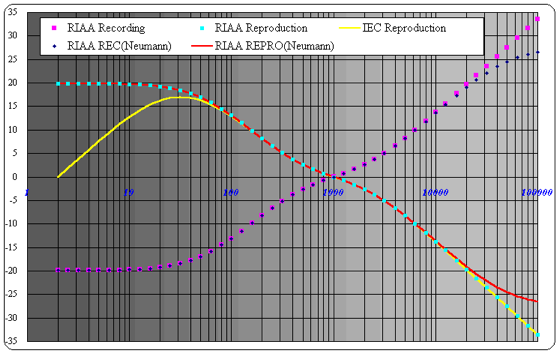
It was about 150 of these curves before the adoption of the standard IEC98 — 1987, which however is still ignored the lion’s share of manufacturers of modern record producing companies!
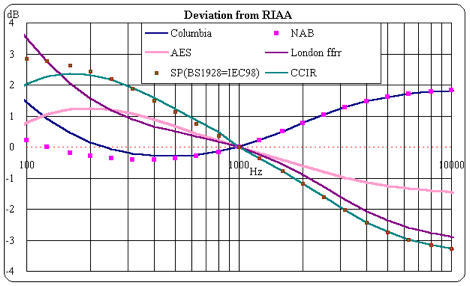
And now let’s return to «non-sounding» record. Let’s suppose that it has transverse record (the system can be found out after using of 50 times multiple manual microscope — if the groove walls symmetrically expand or narrow – it’s vertical record, but if both walls are jumping through the hoops such as parallel zigzags – it’s horizontal record, if each wall has its own curvature – it’s 45 degree record.)
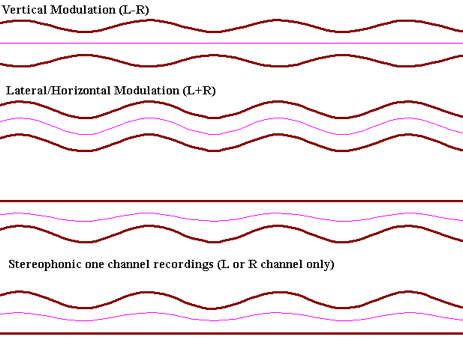
And let’s suggest you have a head, which is stereo (coil positioning system at 45 degree), and the RIAA equalizer is stereo too. Its signals of one of the channels must be turned on the 180 degrees! That’s because for creating a stereo record, left channel signals are recorded in antiphase, i.e. changing plus to minus. Such a system of sound can play in an intended manner only 45 degree records. And for other recording systems the corresponding heads and equalizers are needed. So when you see at the picture the record player with multiple tonearms around, now you realize that it’s not because of a good life, but because of the desire to get the proper sound from the collection records. There must be few equalizers as well. And equalizers must not only be equipped with head conditioning, but also with curve RIAA conditioning, i.e. equalizer should be able to tilt, change the pole and the curve inflection RIAA.
Superficially understood the recording and playing systems we smoothly pass to the age-old topic, so MM or MC? The main difference is in sound, according to numerous articles that replicate each other, lies in the different weight of mobile systems, i.e., moving magnet system is heavier. One gets the impression that no one was holding two heads of MM and MC systems simultaneously and did not investigate their internal structure. I can assure you that the difference in weight can be either the one or the other way. The differences are in the following.
1. Mechanical differences – majority of МС heads have the suspension system that use the principle of the lever of the second kind (this is when you move the log, slipping a stick under it, i.e. the weight force of the log and your force are on one side of the support, in our case, the end of the stick hard-nosed in the ground.) A majority of MM heads have the suspension system that uses the principle of first class lever (teeter). The difference lies in the moments of inertia (Min = G x L*2). In МС heads they are smaller and forces are located on the proper side of the support.
2. Electric differences are in output signal capacity: at MC heads it is smaller than at MM heads, i.e. while the production of signal a needle in the groove gets less resistance from the side of the electromagnetic transducer, thereby increasing the envelope ability of the mobile system. Flexibility of transducer suspension is indicated in the data sheet of the head, but without a series resistor to the inverter (inverter — is a magnet (MM inverter) fluctuating by modulated groove forces at the poles of fixed coils or coil (MC inverter), which fluctuates in a fixed magnetic field). The flexibility of the suspension is defined as follows: by a miniature dynamometer (today digital) where the needle is deflected on 60 micron and then 60 micron are divided on the resulting force. Why on 60 microns? Because the standard specifies a maximum displacement amplitude of the needle on 50.8 microns. It may be objected that there is now an MC-head with MID and HI output, but when compared at a direct test, it appears that the preference is always on the side of head with a small output. Yes, MC-head with a small output may require the purchase of expensive step-up transformer. But the truth is more valuable.
Here are a few more interesting figures taken from standards. Speed of riding the groove on the needle on at the outside radius is 1,833 km / h, and at the inside one is — 0,753 km / h, i.e. the speeds are differ in 2,433 times. The length of an audio track while recording duration of 20 minutes is 862 meters. Maximum acceleration of oscillations of the needle reaches 9.8 x 10*3 m/s*2 or 1000 g!!! Needle pressure on the walls of the groove (with average clamping pressure of 2 gr.) is 100 kg/mm 2*, i.e. a person with a weight of 100 kg is standing on a broken needle! These are the outstanding performance of vinyl record and the associated inverters.
And one more thing, one millimeter sound track of vinyl record contains much more music information than one millimeter track of CD!

Aleksey Oksanenko

